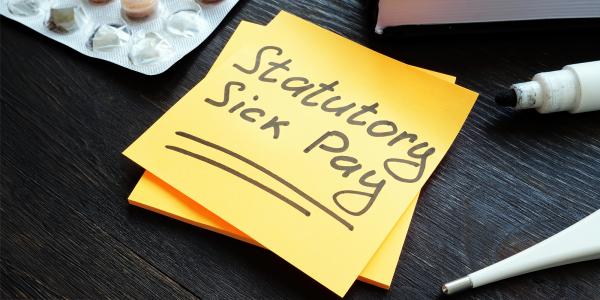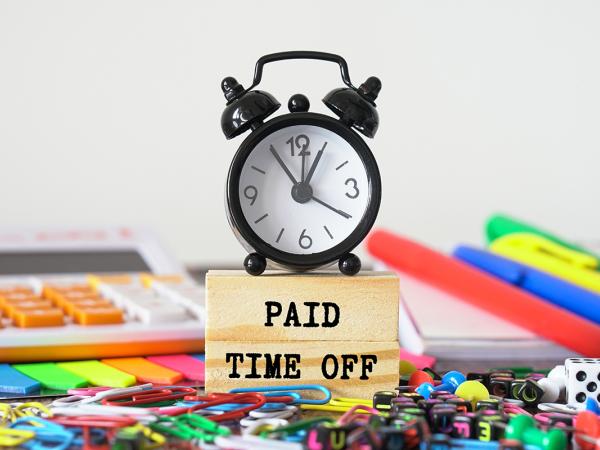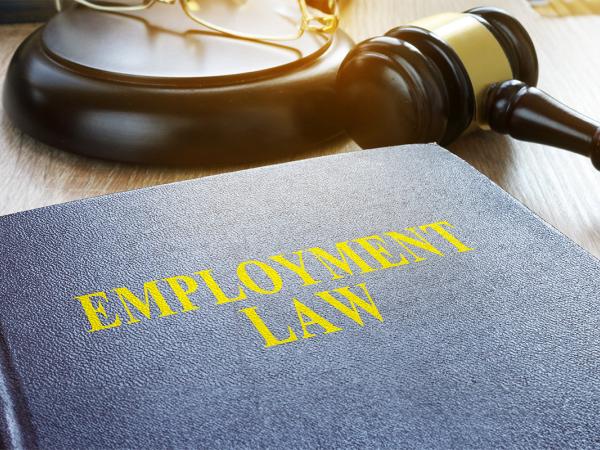Statutory sick pay
If you are ill and cannot work, this page explains what you may be entitled to from your employer.

Content on this page:
Introduction
Statutory sick pay (SSP) is basically the minimum amount of sick pay you should receive from your employer if you are absent from work due to sickness. Your employer might pay more under their own rules, but they can’t pay less.
You are only able to get SSP after you have been sick for four or more days (including non-workdays such as weekends).
SSP is payable in respect of days within a sickness period that you would usually be expected to work. However, SSP is not payable for the first three days of sickness (sometimes these are known as 'waiting days').
Amount
SSP is set at a weekly rate of £116.75 from 6 April 2024 but is usually worked out daily. The amount you actually get depends on the number of days you normally work each week (‘number of qualifying days in week’) and how many of those days you are off sick.
The way SSP works means part-time workers who earn at least £123 per week, qualify for SSP at the normal full weekly rate – they do not receive a pro rata amount. So, someone who is ill for two weeks (after waiting days) but who normally only works three days a week, should get £233.50 in total (£116.75 x 2).
How to get SSP
SSP is available for someone who is an ‘employed earner’ (basically those who are working for an employer that has a liability to pay National Insurance contributions (NIC) for them), who earns an average of at least the lower earnings limit (£123 in 2024/25) and who has done some work under their contract (even if this is just a few hours’ worth). This means that if you are in a new job – you may qualify for SSP even if you have not been paid yet.
The earnings taken into account are broadly the average weekly earnings for the prior eight weeks. If you have more than one job, you cannot combine earnings from them to meet this threshold (unless those jobs are with the same employer). On the other hand, if you have two or more jobs and earn enough in both, you can get SSP from both employers.
Where you have not yet been in the employment for 8 weeks, SSP is worked out by reference to the amount of pay you are due to be paid under your employment contract.
If you are off sick and qualify for SSP, your employer should pay it to you automatically through the payroll and at the normal time. It is subject to tax and NIC just like other wages, although if it is the only amount being paid to you in a particular pay period, it may fall below the relevant thresholds.
You should be able to get a ‘sick note’ (now called a ‘fit note’), if you need one, from a doctor or pharmacist or other healthcare professional. But please note that for the first seven days off work, employees can self-certify, so you do not need any evidence for your employer.
More on eligibility
SSP may be available to casual, zero-hours contract and agency workers (although the period which you may get SSP for might be different – see the heading How long you can receive SSP for below).
A couple of things to note about these types of workers:
- Zero hours contract workers may qualify – provided they are an ‘employed earner’ as explained directly above and have done some work under their contract. Zero hours contract workers who have not yet done any work under their contract will not be entitled to SSP.
- If you are an agency worker, your agency should pay SSP where relevant, except if you work through an umbrella company, in which case your umbrella company should pay it.
People who earn less than the lower earnings limit or who are self-employed (including those treated as self-employed for tax purposes by their engager) are not entitled to SSP – see the heading SSP and being self-employed below for help you might get instead.
If you think that SSP is due but your employers have refused to pay SSP, contact the HMRC statutory payment dispute team.
Tax credits and SSP
Claimants of working tax credit are treated as in qualifying remunerative work during certain periods of sick leave if they are in receipt of:
- SSP
- Short term lower rate incapacity benefit
- Income support on the grounds of incapacity for work
- Employment and support allowance (ESA)
- National Insurance credits on the grounds of incapacity or limited capability for work
The last three bullet points are time limited to 28 weeks.
You should also be aware that if you do claim SSP (or new-style ESA: see below), it will count as income for tax credit purposes. There is no requirement to report changes to income to HMRC when they happen, but if you do not then you may be overpaid if your income increases or you may miss out on additional credits if your income falls.
How long you can receive SSP for
SSP usually stops once an employee returns to work (for example once the period of illness ends) or their contract ends (whatever comes first). If you are an agency worker with less than three months continuous employment, any SSP entitlement will continue to the end of any assignment you had agreed to work, rather than in line with the normal rules.
If you have recently received SSP and are now receiving it again, then this period must be 'linked' with the previous period (even if the sickness is not related) if it is within 8 weeks of the last period of sickness and each period has lasted for at least 4 days.
You should be aware that there is a limit of 28 weeks SSP in any one period of sickness, including in a linked period. So, if you have already received 28 weeks of SSP and the current period of illness is linked to the last period, then no further SSP is due.
You may no longer be eligible for SSP if you have a continuous series of linked periods of absence that lasts more than three years, even if you haven’t been paid 28 weeks' worth of SSP.
SSP and being self-employed
You cannot get SSP if you are self-employed or being treated as self-employed and so aren’t an ‘employed earner’. This is the case even if you are a ‘worker’ for employment law purposes. We explain this further on our employment rights page.
If you are unable to work because you are ill then you may be able to claim new-style employment and support allowance (ESA) if you have paid enough National Insurance contributions (NIC). See directly below for more information. If you are being treated as self-employed and you do not think this is correct, read our guidance on false self-employment.
If you cannot get SSP
Your employer should give you a form SSP1 which explains why you cannot get SSP.
If you aren't entitled to SSP and your employer or the business you work for does not have any other arrangements in place, you may need to access financial support through the benefits system – for example, ‘new style’ employment and support allowance (ESA) (the new name for contributory ESA) and/or universal credit (UC). Which you claim depends on whether you have paid enough NIC to claim new-style ESA (more on this below). Even if you have, you may want to claim UC in addition to topping up your income. See the warning below if you are already claiming tax credits or other benefits and want to claim UC.
Universal credit (UC)
UC is gradually replacing six other benefits: working tax credit, child tax credit, housing benefit, income support, income-related employment and support allowance (ESA) and income-based jobseeker’s allowance (JSA). The majority of people can no longer make new claims to these other benefits, although there are some limited exceptions. Instead, if you need financial support you will probably need to claim UC.
If you are currently receiving any of the benefits UC is replacing, they will end when you make a UC claim. The benefits system is complicated. Before making any claims, you should seek specialist welfare rights advice.
You should also be aware of the following:
- UC takes savings over a certain level into account and your partner’s circumstances and income. If their income is too high, you may not qualify for any help.
- If your partner receives new-style or contributory ESA – you may be able to ask for it to be re-assessed to include an income-based element to top-up your income instead of claiming UC. If you are in this situation, you should seek advice.
Employment support allowance (ESA)
In order to qualify for ‘new-style’ ESA, there are several NIC requirements which are explained on the Entitledto website.
Please note that it is possible to fulfil one of the conditions with Class 1 NIC credits (which a person may get in various circumstances) and there are certain relaxations for the other condition.
You should be aware however, that if you are a person in very low-paid employment or self-employment, you are not necessarily going to easily meet those NIC requirements, particularly, for example, if you work in low-paid self-employment and have not yet filed your tax returns (this is the method through which you pay NIC if you are self-employed).
If you are self-employed and have filed your tax returns, but for whatever reason have paid your Class 2 NIC ‘late’, then you should be aware that the Class 2 is treated as being paid six weeks after it is actually paid, the result being that your payment of ESA can be delayed. You can see this explained in HMRC’s guidance.
Note that the requirement for Class 2 NIC to be paid by the first Sunday in January after the tax year in question so as not to be late, was later changed to 31 January after the tax year in question.
Note that there are some changes to the rules around payment of Class 2 NIC from 6 April 2024 onwards. See our guidance on NIC for more information.
Access to work grants
The access to work scheme provides government grants to help disabled people start, or stay in, work. If you become disabled or start to have long term health conditions for the first time, you might therefore wish to look into whether access to work can help you during this time.
On our dedicated page, we explain more about access to work.
Further information
There is information about SSP on GOV.UK.
You can find a guide to SSP for employees, on the Citizens Advice website.
We have a lot of information on SSP for employers on our page Statutory sick pay: information for employers, which may also be useful for employees.



